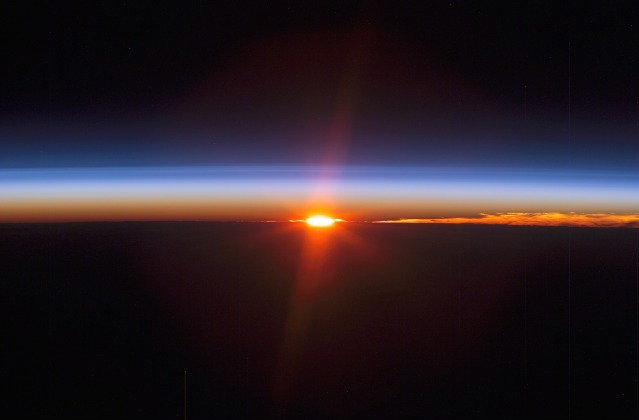Whoops, “Gravitational Waves” Big Bang Evidence May Have Just Been Dust
There's a strong metaphor in here somewhere about the nature of the universe...

Gravitational waves that would’ve formed during the Big Bang’s “inflation” were theorized in 1980, but earlier this year a team announced that they’d found proof of the waves’ existence, which would be strong evidence in support of the Big Bang. Since then, the discovery has faced a lot of scientific opposition, and new research shows it may have just detected dust in the wind magnetically aligned patterns.
The original work of the BICEP2 team found that the Big Bang had placed a “stamp” on the fabric of the Universe in the form of B-mode polarization. The theory goes that when the Universe was born, it sent out ripples that would have stretched into great waves in the fabric of the Universe as it expanded that would still be detectable today. The BICEP2 team thought they’d detected this background fingerprint of the universe in the pattern their sensors found, but researchers using Planck data aren’t so sure.
In a paper recently published on the arXiv pre-print server, a team using data collected from the Planck space observatory’s High Frequency Instrument (HFI) concluded that the signal originally thought to be gravitational waves could potentially be 100% accounted for by galactic dust. When they looked at the section of sky originally surveyed by the BICEP2 sensor, they found that the swirl pattern originally thought to be gravitational waves matched up to what they’d expect from the area’s cosmic particles.
The BICEP2 team already knew, using Planck data, that some of their signal was likely from dust, but original estimates showed that at least 80% of the cosmic swirl they detected was from something else. This new estimate from Planck throws a lot of doubt on that and shows that there isn’t really a clear patch of sky around Earth where dust wouldn’t interfere with finding gravitational waves. But nothing will be known for sure until further analysis, which the teams are working on jointly.
According to Quanta Magazine, Harvard theorist Avi Loeb said of the BICEP2 readings, “Definitely they detected something. The significance of that depends on what the interpretation is. If it’s dust, it has no cosmological significance whatsoever.” So, there you have it: Like Bigfoot sightings, Yeti appearances, and ghost stories, they definitely saw something. Way to go, science.
(via io9, image via NASA Marshall Spaceflight Center)
- The BICEP2 has been hedging their claims
- But video of the scientist who first theorized the waves hearing about the discovery is still great
- Here’s a quick explainer if you still don’t get the gravitational waves
Are you following The Mary Sue on Twitter, Facebook, Tumblr, Pinterest, & Google +?
Have a tip we should know? tips@themarysue.com